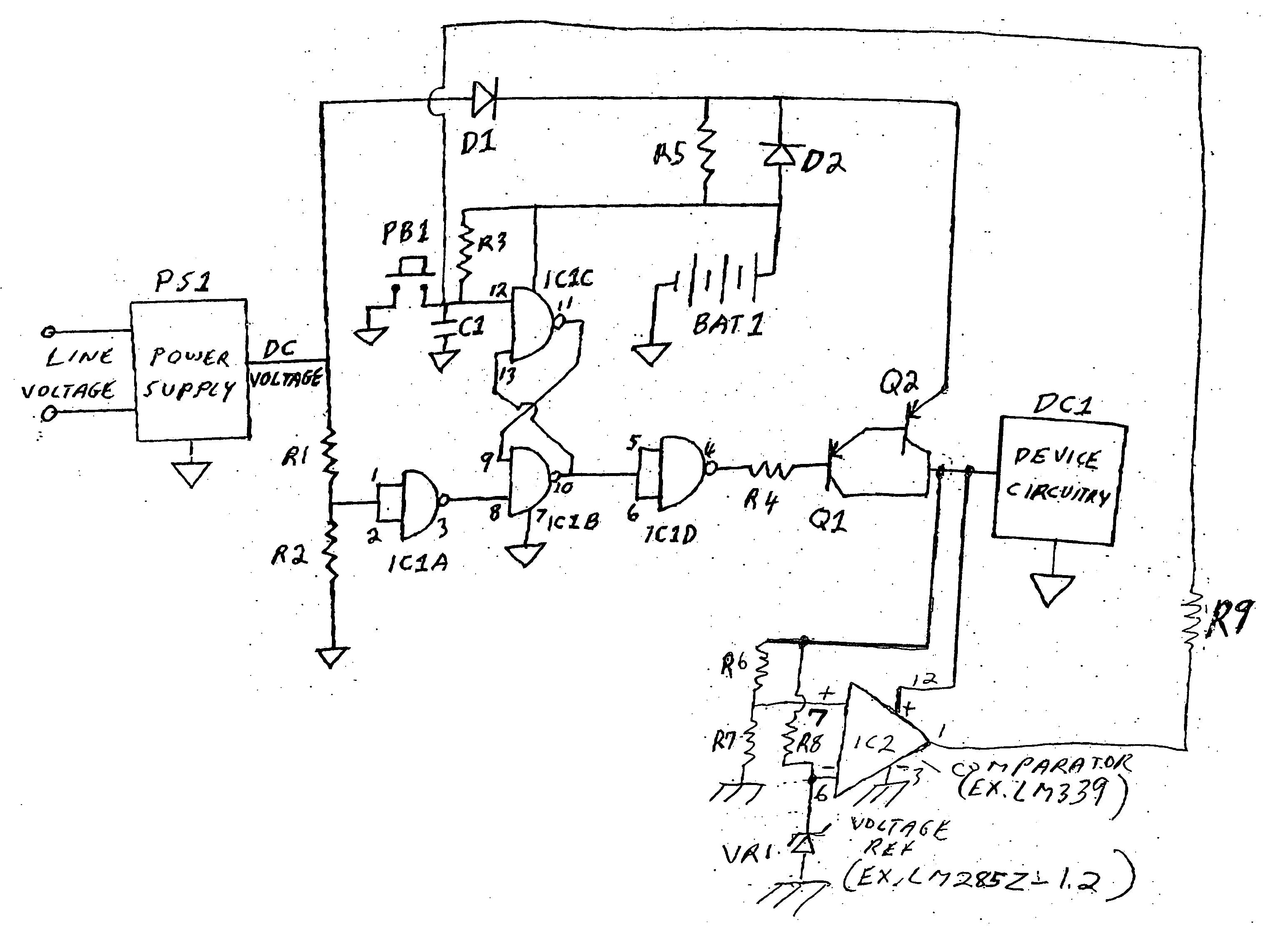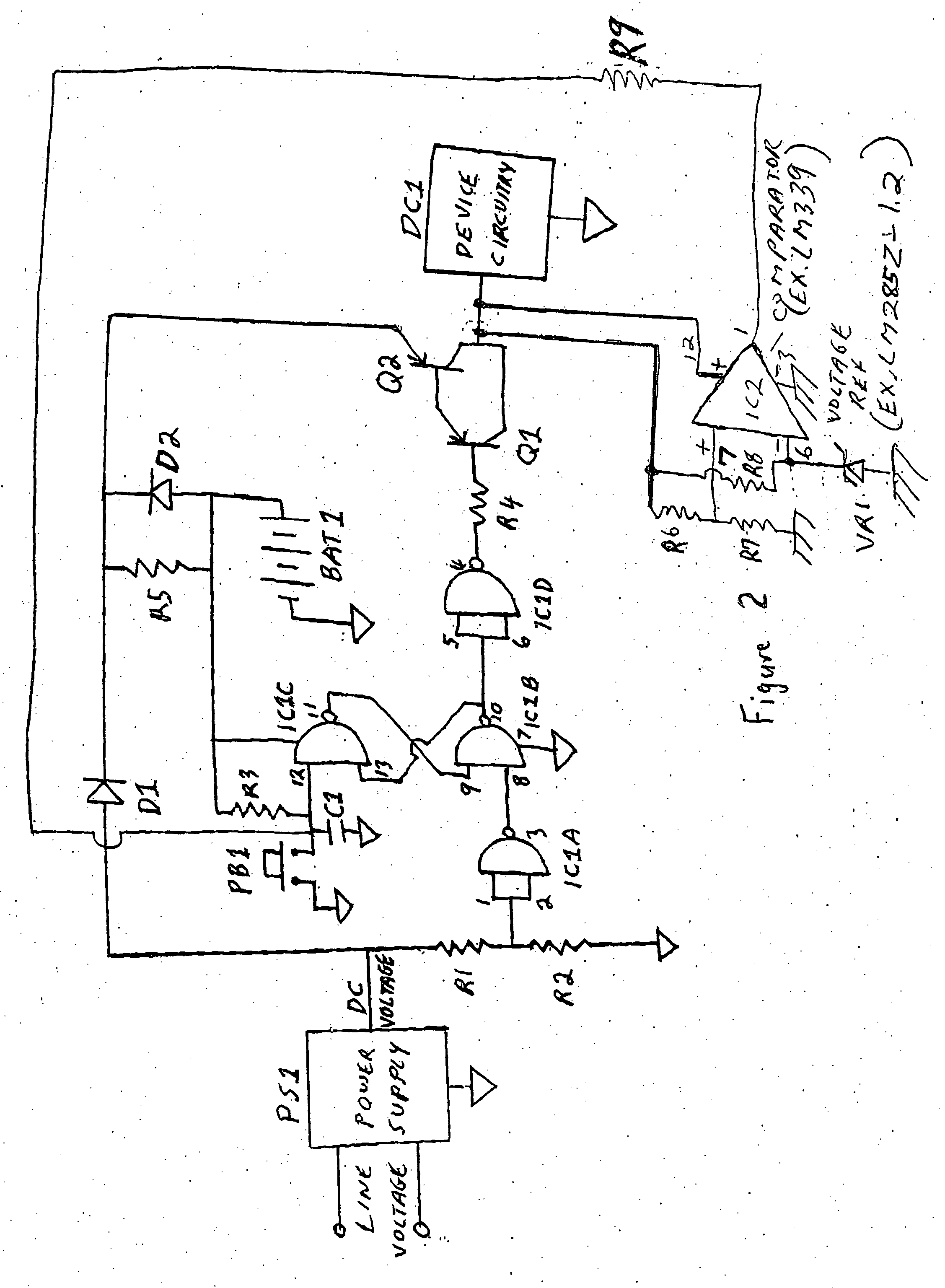Electrically operated product, circuit for allowing a backup battery to be physically connected without being electrically connected
a technology of electrical operation and circuit, applied in the field of electrical circuit, can solve the problems of circuit not solving, requires a relatively large amount of current,
- Summary
- Abstract
- Description
- Claims
- Application Information
AI Technical Summary
Benefits of technology
Problems solved by technology
Method used
Image
Examples
Embodiment Construction
[0014] With reference to FIGS. 1 and 2, a description of the control circuit of the present invention will now follow.
[0015] PS1 is a block representation of a typical power supply, which is designed to take AC line voltage, normally 120VAC, change the line voltage to a lower voltage and then convert the lower voltage to DC voltage. This resultant lowered DC voltage is typically what is required to operate many electrical or electronic devices, and PS1 is the primary power source for device operation. BAT 1 is a battery, such as a 6 volt rechargeable battery, which serves as a secondary source of device operation when PS1 is not activated, such as during a power failure. D1 and D2 are diodes such as a 1N4001, and they are configured so that, while voltage supplied by PS1 and BAT 1 are joined as one power source for device operation, power from PS1 cannot feed back into BAT 1, and power from BAT1 cannot feed back into PS1. The joined cathode connection of D1 and D2 is then connected...
PUM
 Login to View More
Login to View More Abstract
Description
Claims
Application Information
 Login to View More
Login to View More - R&D
- Intellectual Property
- Life Sciences
- Materials
- Tech Scout
- Unparalleled Data Quality
- Higher Quality Content
- 60% Fewer Hallucinations
Browse by: Latest US Patents, China's latest patents, Technical Efficacy Thesaurus, Application Domain, Technology Topic, Popular Technical Reports.
© 2025 PatSnap. All rights reserved.Legal|Privacy policy|Modern Slavery Act Transparency Statement|Sitemap|About US| Contact US: help@patsnap.com



